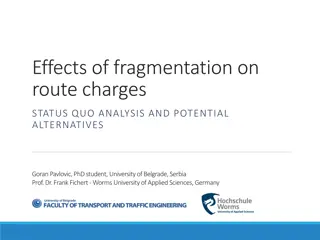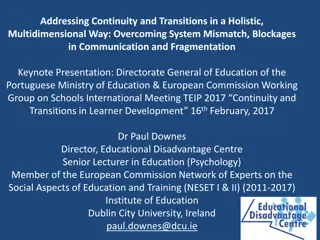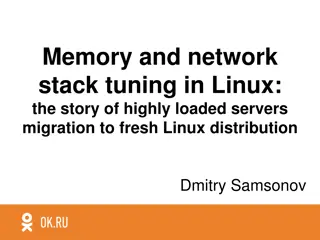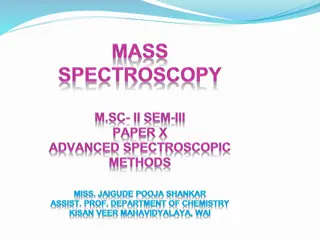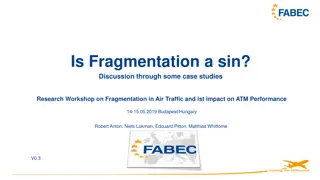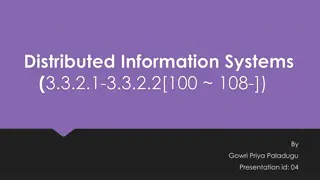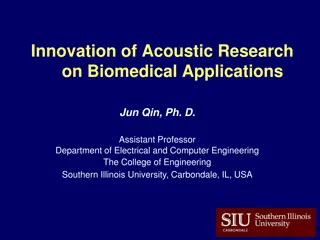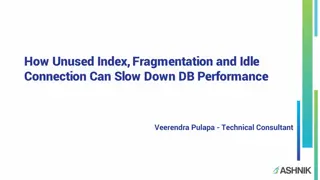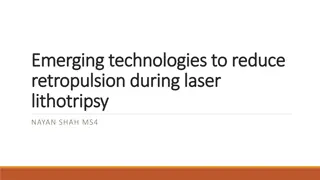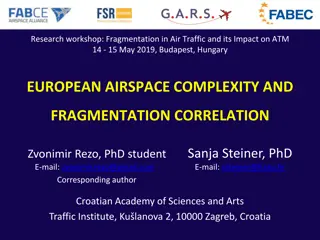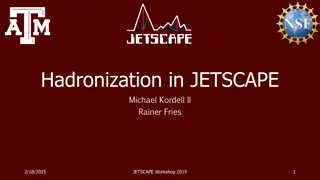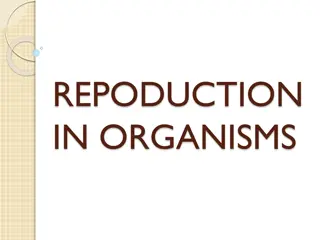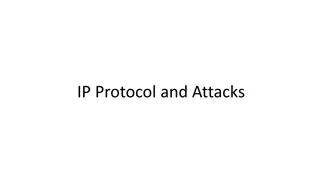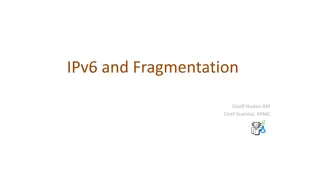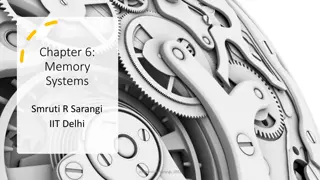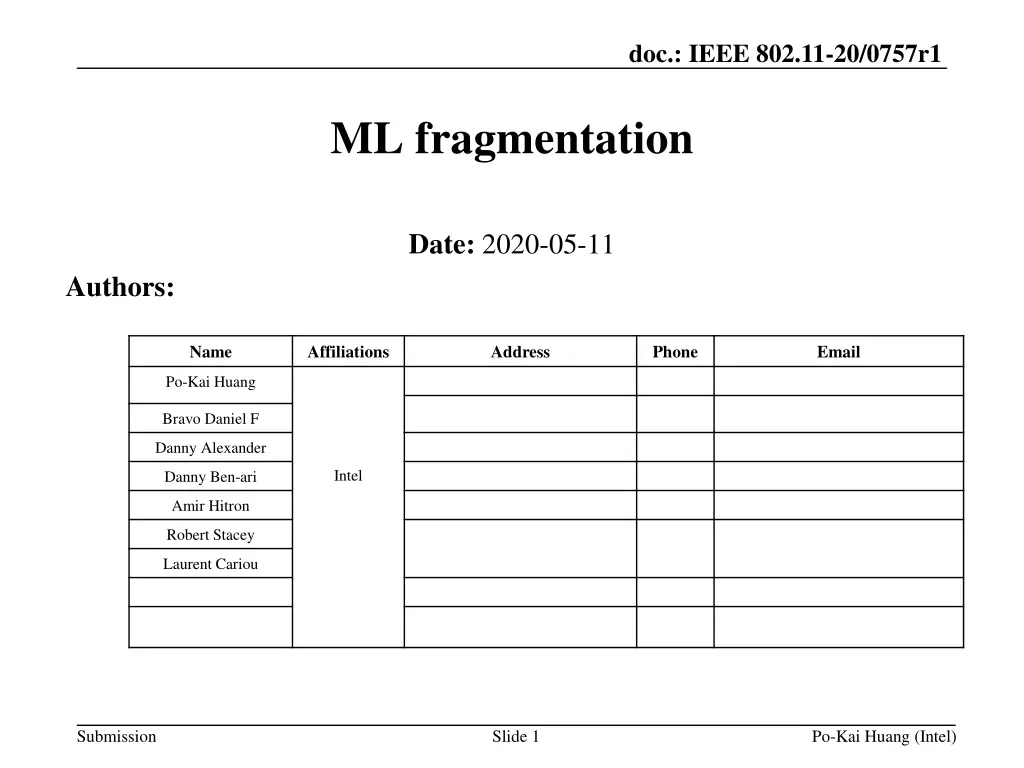
Understanding IEEE 802.11 Fragmentation Handling in Networks
Explore IEEE 802.11-20/0757r1 documentation on fragmentation in wireless networks, including existing fragmentation levels, considerations, and limitations. Learn about MPDU length limits and potential impacts on HE PPDU and EHT PPDU, highlighting the importance of efficient data transfer protocols in multi-link environments.
Download Presentation

Please find below an Image/Link to download the presentation.
The content on the website is provided AS IS for your information and personal use only. It may not be sold, licensed, or shared on other websites without obtaining consent from the author. If you encounter any issues during the download, it is possible that the publisher has removed the file from their server.
You are allowed to download the files provided on this website for personal or commercial use, subject to the condition that they are used lawfully. All files are the property of their respective owners.
The content on the website is provided AS IS for your information and personal use only. It may not be sold, licensed, or shared on other websites without obtaining consent from the author.
E N D
Presentation Transcript
doc.: IEEE 802.11-20/0757r1 ML fragmentation Date: 2020-05-11 Authors: Name Affiliations Address Phone Email Po-Kai Huang Bravo Daniel F Danny Alexander Intel Danny Ben-ari Amir Hitron Robert Stacey Laurent Cariou Submission Slide 1 Po-Kai Huang (Intel)
doc.: IEEE 802.11-20/0757r1 Background ML BA has basically settled down. We discuss how to handle fragmentation in this presentation. Submission Slide 2 Po-Kai Huang (Intel)
doc.: IEEE 802.11-20/0757r1 Overview of Existing fragmentation Rough description of existing fragmentation Level 0 (pre 11ax): Without BA, fragmentation based on fragmentation threshold with fixed length except last one. Fragments are sent in order. Level 1: With or without BA, allow dynamic length of fragments. Level 2: Allow fragment to be aggregated with other MPDUs in A- MPDU. Level 3: less interests Level 0 to Level 2 require fragments to be sent in order Submission Slide 3 Po-Kai Huang (Intel)
doc.: IEEE 802.11-20/0757r1 Consideration on Fragmentation We are not keen to enable fragmentation for MLD in R1 due to the following reasons Transfer fragment information across links is considered to be difficult In generally, dynamic fragmentation only has performance gain for MU case to fit in the remaining allocated resource, but the gain is not huge in practice Baseline fragmentation is used to increase reliability, but low MCS is generally enough to increase reliability Refragmentation is hard to do for scenarios of different links and we need additional schemes We think a capability bit to indicate support of receiving fragmentation from peer MLD will be helpful We think enable fragmentation between MLDs can be done in R2 due to no strong justification for the gains We think we should avoid creating additional reasons that force fragmentation in multi-link Submission Slide 4 Po-Kai Huang (Intel)
doc.: IEEE 802.11-20/0757r1 Current MPDU length limit may Force Fragmentation For HE PPDU and (if no change) EHT PPDU , there is a MPDU size difference based on Table 9-25 for 2.4 GHz and 5/6 GHz MPDU length limit in 5/6 GHz: 3895, 7991, or 11454 MPDU length limit in 2.4 GHz: constrained by 3839 or 7935 A-MSDU size limit If we do A-MSDU fragmentation up to 11k in 5/6 GHz, then retransmit the frame in 2.4 GHz requires fragmentation A situation that may force fragmentation or limit usage of different links If we want to avoid potential fragmentation in 2.4, then aggregation above 7935 is not possible, usefulness of 11k size limit is then gone Submission Slide 5 Po-Kai Huang (Intel)
doc.: IEEE 802.11-20/0757r1 Proposal Between two MLDs, no fragmentation for R1 For a MLD, there should be common MPDU length limit across links link Fragmentation is then not forced due to different MPDU length limit For HE/EHT PPDU, indication is required to indicate maximum MPDU length for HE and EHT PPDU with the following values across links: 3895, 7991, 11454 Submission Slide 6 Po-Kai Huang (Intel)
doc.: IEEE 802.11-20/0757r1 Conclusion We propose the following: Have a bit to indicate if MLD supports reception of fragmentation Define the functionality of enabling fragmentation between two MLDs in R2 Have common MPDU length limit across links For HE/EHT PPDU, indicating the following values for maximum MPDU length across links: 3895, 7991, 11454 Submission Slide 7 Po-Kai Huang (Intel)
doc.: IEEE 802.11-20/0757r1 Backup Submission Slide 8 Po-Kai Huang (Intel)
doc.: IEEE 802.11-20/0757r1 SP #1 Do you support to add the following to 11be SFD? Between 2 MLDs, no fragmentation for R1 Submission Slide 9 Po-Kai Huang (Intel)
doc.: IEEE 802.11-20/0757r1 SP #2 Do you support to add the following to 11be SFD? Each STA in a MLD has common capabilities for the maximum MPDU length, and the capability for the maximum MPDU length of HE and EHT PPDU across links includes the following values? 3895, 7991, 11454 Note - Signaling for the indication is TBD Submission Slide 10 Po-Kai Huang (Intel)


